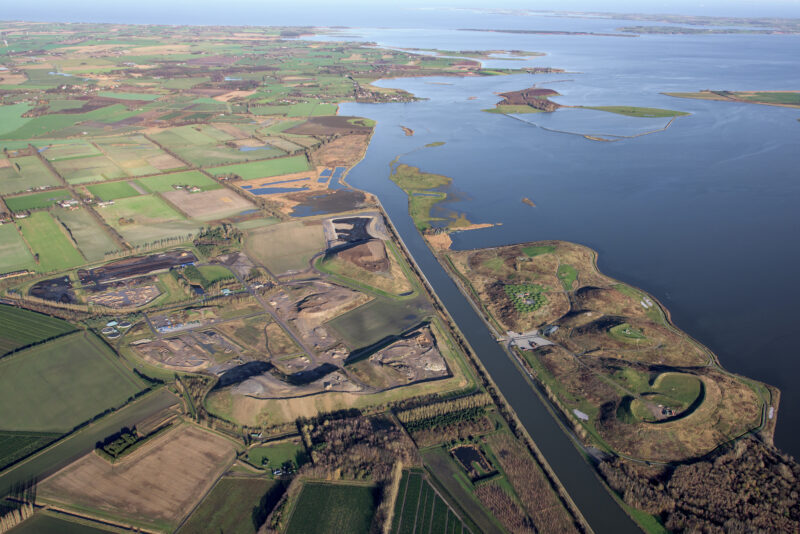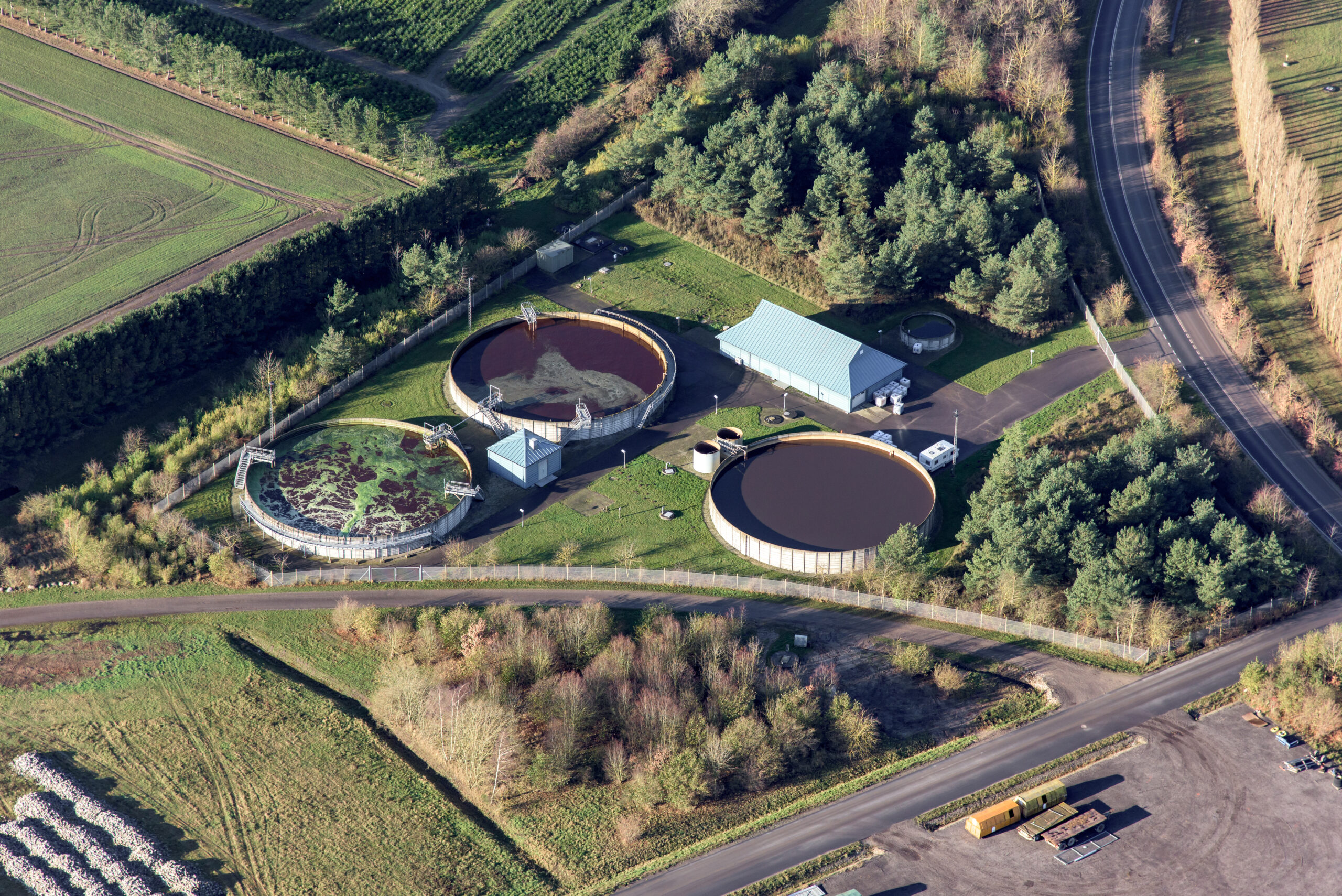Solution provider

Ramboll is a leading international architecture, engineering, and consultancy company, owned by the Ramboll Foundation.
Case
Wastewater treatment
Wastewater management


Ramboll is a leading international architecture, engineering, and consultancy company, owned by the Ramboll Foundation.
Add the case to your visit request and let us know that you are interested in visiting Denmark
Photo credit: Ramboll
PFAS is a new problem in our society with increasing focus since the so-called “forever chemicals” are harmful to both our environment and our health. PFAS are found almost everywhere and are also present in wastewater where it is detected in too high concentrations.
In Denmark leachate from landfills is treated at municipal wastewater treatment plants (WWTPs) and research has shown that leachate is one of the major contributors to PFAS in Danish municipal WWTPs.
The type of leachate and the concentration of PFAS can vary a lot from landfill to landfill as well as from cell to cell in each landfill. Furthermore, the leachate also contains a lot of other environmental harmful substances. The municipal WWTPs are not designed to remove PFAS and can only remove other environmental substances to a limited extent with the result that the substances end up in the aquatic environment. The current technological possibilities are limited and costly and therefore, the removal of PFAS should happen at the source.
PFAS are difficult to remove from wastewater, and most of the technologies are separation technologies where PFAS are only removed from the medium and concentrated in foam or sludge that require a subsequent destruction. Additionally, these technologies are most effective in removing long-chain
PFAS, while only removing short-chain PFAS, which are often found in leachate, to a limited extent. Therefore, there is a need for knowledge and specific experience with removal of PFAS from leachate before plant investments are made.
In Odense, the third largest city of Denmark, the waste management company Odense Renovation operates the landfill “Odense North Environmental Center” (ONEC). It is one of the largest landfills in the country and discharges up to 200.000 m3 of leachate pr. year with a high content of short-chained PFAS. The leachate is pre-treated (nitrification) before it goes to Odense North West (ONW) WWTP from where it is discharged into Stavis River which ends in Odense Fjord (picture 1). The level of PFAS in the effluent from ONW WWTP is eight times higher than the limit value for PFAS24 in aquatic environments.
Odense Renovation has engaged in a partnership with the utility company VCS Denmark, who operates ONW WWTP, to find a common solution to the problem. VCS Denmark operates the pre-treatment plant at ONEC and will likely also operate the future PFAS treatment plant.
The two partners asked Ramboll to perform a PFAS mapping at the landfill back in 2022. The mapping included analysis of both the individual landfill cells and the entire leachate flow during a longer time period.
In 2023 the two partners joined forces with Ramboll, ETC2 and Envytech Solution in a project supported by VUDP assessing the contribution of PFAS from ONEC to ONW WWTP and investigating the removal technologies foam fractionation, flocculation with FluorFloc and ion exchange resin. The experiments are performed in lab- and pilot scale, and the project is running until late summer 2024.

The mapping of PFAS in leachate from ONEC has shown a high variation in concentration from the different landfill cells with the most polluted cell being shredder waste showing concentrations up to 69.000 ng/l PFAS22. The entire leachate transported to ONW WWTP has a concentration of 2.400-8.000 ng/l PFAS22.
The PFAS fingerprint from the leachate is dominated by high concentrations of the short-chained PFBS, which make up 46-68% of the total PFAS22 with concentration levels between 1.400-5.400 ng/l. On the basis of the knowledge level in 2022, a cost between 1.700-2.400 EUR/m3 for treating the leachate from ONEC was estimated (TOTEX with 20 years horizon and 50% uncertainty). The Danish limit value of PFAS in aquatic environments is 0.0044 µg/l PFOA equivalents. Analyses from the effluent of ONW WWTP has shown a PFAS concentration of 0,039 µg/l. To evaluate the contribution from ONEC to the PFAS concentrations measured at ONW WWTP, a measuring campaign was performed.The results showed an average daily discharge of 1.4-3.8 g of PFAS22 from ONEC to ONW WWTP. As the WWTP has a daily discharge around 3-4 g PFAS22 to the local recipient, ONEC are the biggest contributor of PFAS at ONW WWTP.
In the project, preliminary experiments with foam fractionation in mini-SAFF (Picture 2) and targeted flocculation by FluorFlok (Picture 3) are performed by Enytech Solutions and ECT2 respectively. Both technologies are by default most suited for removing the long-chained PFAS which are concentrated in a foam- or sludge phase. The foam fractionation achieved a removal efficiency of 39% for PFAS22, >91% for PFAS4 and 32% for PFBS. As flocculation could also remove the short-chained PFBS, the technology showed higher removal efficiencies of 74-76% for PFAS22, 96-97% for PFAS4 and 85-88% for PFBS. The flocculation also reduced the main portion of the heavy metals as >67% of lead, >23% of cadmium, >55% of chrome and >58% of zinc was removed.
Removing PFAS by flocculation is not sufficient to comply with the limit value in aquatic environments and therefore experiments with further treatment in ion exchange columns have been performed. The results show a possibility of reaching very low PFAS levels, but it is a costly solution as the columns are quickly saturated.
The collected PFAS in terms of foam from foam fractionation or sludge from flocculation need to be treated by e.g. incineration to destroy the PFAS. Different technologies are applicable here, but they are not investigated in this project.